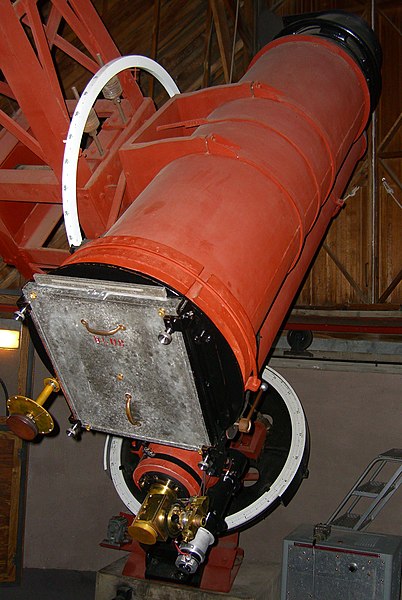Clyde William Tombaugh was an American astronomer. He discovered the ninth planet Pluto in 1930, the first object to be discovered in what would later be identified as the Kuiper belt. At the time of discovery, Pluto was considered a planet, but was reclassified as a dwarf planet in 2006. Tombaugh also discovered many asteroids, and called for the serious scientific research of unidentified flying objects.
Tombaugh at his family's farm with his homemade telescope (1928)
Tombaugh created his photographic plates using this 13-inch (330 mm) astrograph
Pluto
Tombaugh compared his photographic plates using this blink comparator.
Pluto is a dwarf planet in the Kuiper belt, a ring of bodies beyond the orbit of Neptune. It is the ninth-largest and tenth-most-massive known object to directly orbit the Sun. It is the largest known trans-Neptunian object by volume, by a small margin, but is less massive than Eris. Like other Kuiper belt objects, Pluto is made primarily of ice and rock and is much smaller than the inner planets. Pluto has roughly one-sixth the mass of Earth's moon, and one-third its volume.
Pluto, imaged by the New Horizons spacecraft, July 2015. The most prominent feature in the image, the bright, youthful plains of Tombaugh Regio and Sputnik Planitia, can be seen at right. It contrasts the darker, cratered terrain of Belton Regio at lower left
Clyde Tombaugh, in Kansas
Sputnik Planitia is covered with churning nitrogen ice "cells" that are geologically young and turning over due to convection.
Multispectral Visual Imaging Camera image of Pluto in enhanced color to bring out differences in surface composition.






